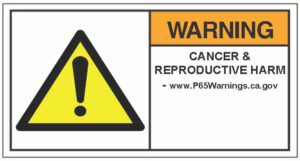Achieving success in today’s automotive market depends on aftermarket companies’ ability to match the right products with the right customers at the right time.
This task is especially challenging for aftermarket companies that offer thousands of products for thousands of different vehicles and sell these products through dozens of different online retailers. While ACES and PIES provide a working standard, there are still massive challenges in managing this data. Navigating this minefield of data and requirements takes aftermarket companies away from doing what they do best: offering the best products for their customers.
This is exactly where a Product Information Management (PIM) system can help.
PIM systems function as a central repository for product information, allowing aftermarket suppliers and retailers to collect, manage, and distribute data to various channels. Information in PIM systems may include product descriptions, specifications, images, inventory, pricing, and more. In short, PIM systems function as a single source of truth to help aftermarket companies streamline their operations and connect their products with buyers.
The Benefits of a Product Information Management System for Automotive Aftermarket Companies
Improves Data Accuracy
Connecting the right part with the right customer forms the cornerstone of success in eCommerce marketplaces.
Thanks to the sheer volume of parts available on eCommerce platforms, poor data accuracy can lead to dissatisfaction, returns, and a lack of customer loyalty. ACES and PIES establish product data standards, but managing this mountain of data can be problematic without a properly set up PIM.
A primary benefit of a product information management system over outdated spreadsheets is its ability to centralize product data management. This system ensures consistent product information across all channels such as your website, resellers, and marketplaces. This single source of truth reduces opportunities for error and keeps your products moving into the hands of people who need them most.
Streamlines Processes
By simplifying and optimizing various business operations, a PIM can eliminate unnecessary steps and reduce time wastage, allowing for a more effective use of resources. Streamlining processes also enhances consistency and quality of work, reducing the likelihood of errors and ensuring accuracy. This improves customer satisfaction and boosts employee morale by providing a clearer and more organized workflow.
In addition, utilizing a PIM to streamline processes also enables aftermarket manufacturers to adapt quickly to market changes and new opportunities, maintaining a competitive edge in the industry.
Improves The Customer Experience
By providing detailed and accurate product information, a PIM can significantly improve the customer experience, particularly for aftermarket shoppers who rely heavily on product descriptions and fitment data to make a decision.
A PIM solution ensures that ACES and PIES data is maintained accurately and that data is distributed to sales channels. When a product is changed within the PIM system, the information is automatically updated, allowing for a seamless transition of current data to all of your customers without additional steps.
Enhances Collaboration
ACES and PIES compliance requires collaboration between manufacturers, distributors, and retailers. A PIM software enables collaboration and teamwork, allowing everyone in your organization to access the same data. This ensures everyone is on the same page and reduces the risk of errors and inconsistencies.
Promotes Scalability
Another benefit of a robust product information management platform, designed specifically for aftermarket brands and retailers, simplifies the management of SKUs, whether in the hundreds or thousands.
Managing large amounts of data with ease not only allows manufacturers to manage their current product lines effectively but also allows for easy expansion of product lines. In addition to adding new products, PIM systems allow for quick and nimble changes to existing products across multiple platforms. Changes can include something as simple as a product photo, or more complicated tasks such as removing an item from various channels.
Do I Need a PIM? Yes–PDM Automotive Can Help
Utilizing a Product Information Management system as your central repository for all product data enables manufacturers and retailers to maintain uniformity, effectiveness, adaptability, and growth potential across various customer touch points.
This approach enhances the customer experience and leads to significant time and resource savings, which are key drivers of business expansion and prosperity.
Regardless of your business’s current scale, PDM Automotive can help you grow without the data hassles.
Check out these other resources
The Ultimate Guide to ACES and PIES
How to Upload Fitment Data to Amazon
How to Maximize Amazon Sales with Amazon A+ and A+ Premium Content





